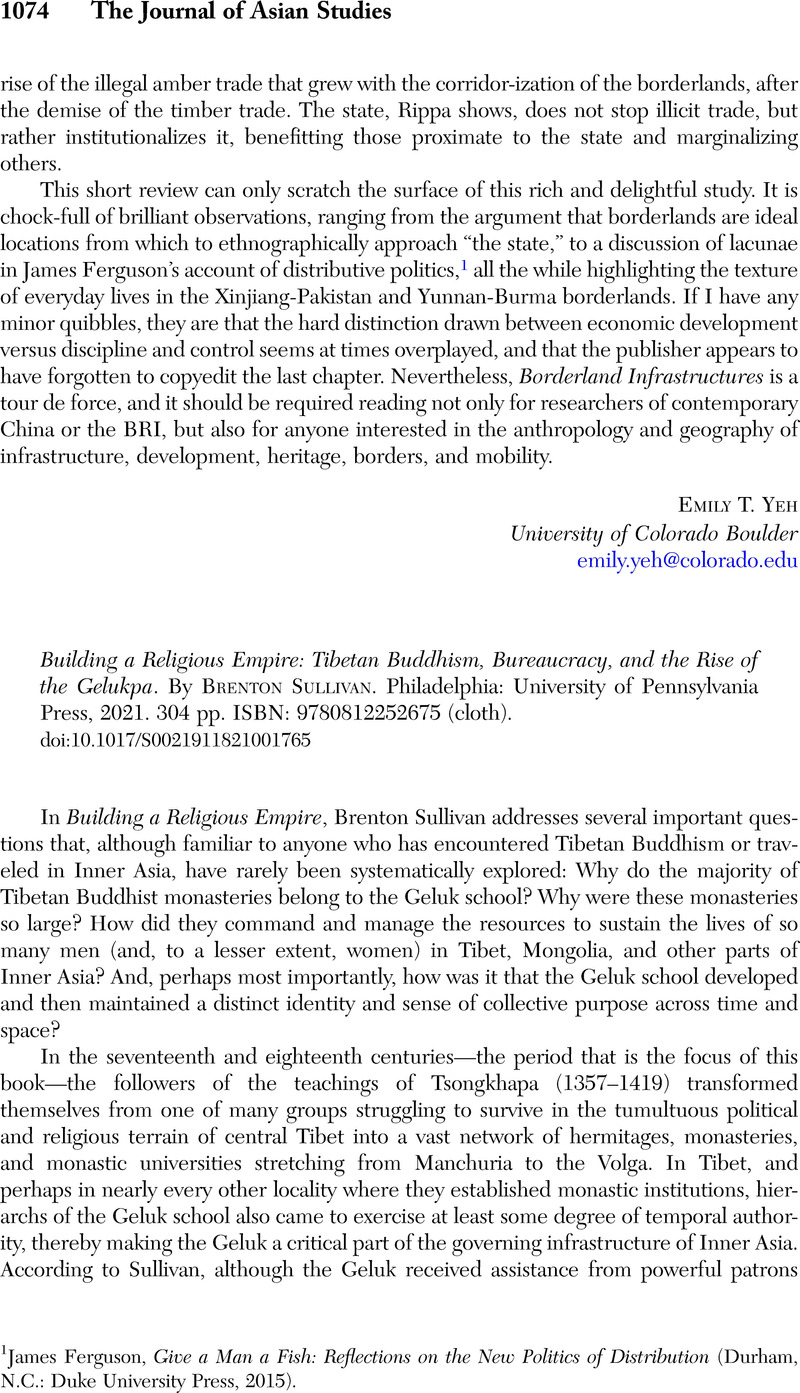No CrossRef data available.
Published online by Cambridge University Press: 10 January 2022

1 Sneath, David, The Headless State: Aristocratic Orders, Kinship Society, and Misrepresentations of Nomadic Inner Asia (New York: Columbia University Press, 2007)CrossRefGoogle Scholar.
2 See, for instance, recent publications by scholars affiliated with the Tibetan Army project, especially Travers, Alice and Venturi, Federica, “Buddhism, Both the Means and the End of the Ganden Phodrang Army: An Introduction to Buddhism vis-à-vis the Military in Tibet (1642–1959),” Cahiers d'Extrême-Asie 27 (2018): 13–22CrossRefGoogle Scholar; Solomon George FitzHerbert and Alice Travers, “Introduction: The Ganden Phodrang's Military Institutions and Culture between the 17th and 20th Centuries, at a Crossroads of Influences,” Revue d'Etudes Tibétaines, no. 53 (March 2020): 7–28.
3 Following Peter Perdue, I define “colonial” as the practices that metropolitan centers and metropolitan populations employ to dominate subordinate groups. See Perdue, “China and Other Colonial Empires,” Journal of American-East Asian Relations 16, no. 1–2 (2009), 85–103, esp. 89.
4 Oidtmann, Max, “A ‘Dog-Eat-Dog World’: Qing Jurispractices and the Legal Inscription of Piety in Amdo,” Extrême Orient Extrême Occident 40 (November 2016): 151–82CrossRefGoogle Scholar.